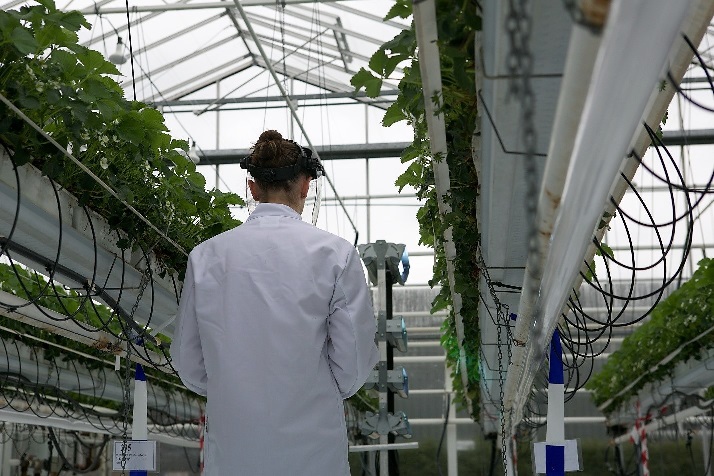In UV-ROBOT we aim to investigate and optimize the use of UV-C for mildew control. Before using UV-C in horticultural practices against mildew, side effects need to be examined. UV-ROBOT will determine the side effect of UV-C on diseases, pests, beneficials and crop protection common in strawberry, tomato, cucumber, lettuce and basil. Possible side effects can either be positive (eliminating diseases and pests) or negative (harming beneficials) and therefore need to be investigated before integrating UV-C in IPM. In strawberry the first side effect trials have been performed. (Read more under image below.)
First trial results on strawberry

UV-C application has no impact on aphids in strawberry crops
One of the major pests in the cultivation of strawberries are aphids. Proefcentrum Hoogstraten tested the effect of four doses of UV-C on a high pressure of aphids in an everbearer cultivation under glass. The applied doses were 3, 6, 12 and 20 mJ/cm². Plants were treated with UV-C three times a week for 4 weeks in total. The pressure of aphids was screened before and after UV-C treatments. After two and four weeks no decrease in the population of aphids was seen compared to the untreated control. Therefore we can conclude that UV-C in the applied daytime dosages does not affect aphids in strawberry cultivation. It will be researched if the same is true for beneficial insects in the future.
Pesticide residues do not break down faster when exposed to UV-C
Next, we reviewed whether the application of UV-C had an effect on applied pesticides and their residues. Four pesticides were individually applied in a strawberry crop under glass: Floramite (bifenazate), Calypso (thiacloprid), Vertimec (abamectin) and Luna Sensation (fluopyram + trifloxystrobin). Next, half of the crop was illuminated with 12 mJ/cm² UV-C (3x/week) and the other half was left untreated. Residue analyses performed the day of treatment, four and ten days after revealed that there was no difference between UV-C and the control treatment. The MRL percentage of active ingredients decreased over time, but this did not decrease faster when plants were exposed to UV-C. It is likely that the constant solar irradiation has more power to break down active ingredients than the short exposure of UV-C.
